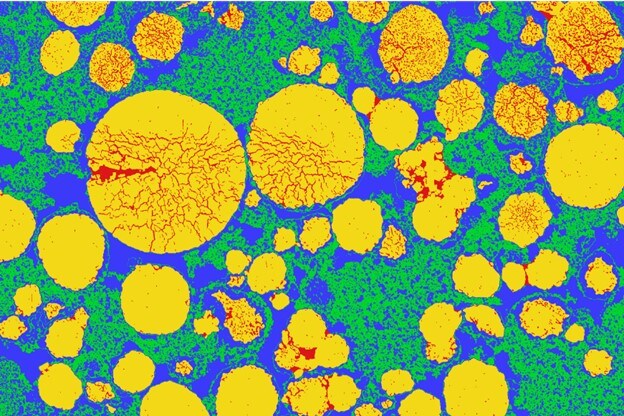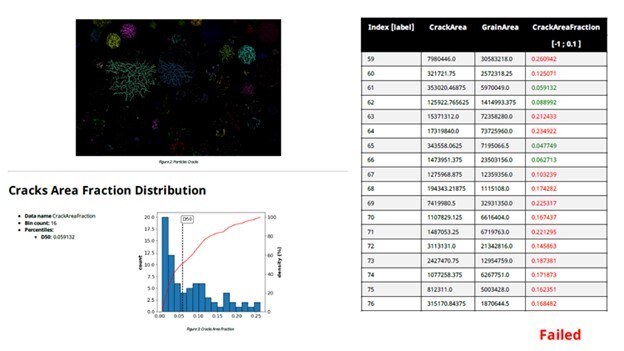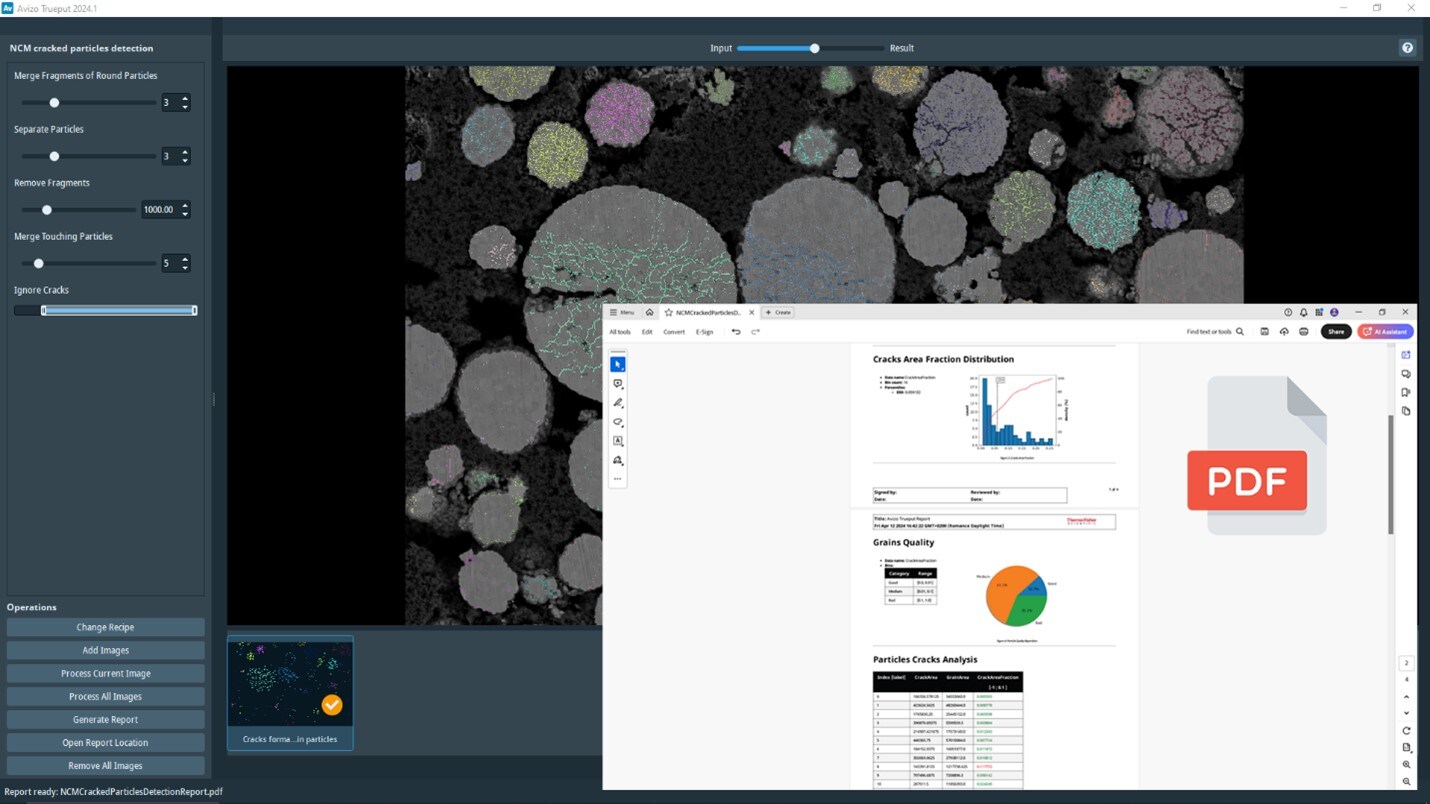Quality control in battery manufacturing
The first challenge in assessing battery manufacturing quality is determining what criteria a sample must meet to pass the test. Quality assessment is further complicated by the inherent variability in what individual operators see as good or bad, which in many cases is tied to their level of expertise. To effectively find and correct manufacturing challenges, you need consistency in not only your data but also your interpretation of that data.
Key process indicators (KPIs) and standard operating procedures (SOPs) are important and helpful tools in manufacturing quality control, but even they have their limits. Especially when the final determination of whether a sample passes or fails relies on a person looking at an image or 3D render.
For example, one quality indicator in battery manufacturing is whether cathode particles crack after several cycles, which diminishes electrode efficiency. When this happens, the battery binder also tends to migrate, weakening the conductive network between particles and reducing the mobility of electrons between the charge collector and the particles.
To measure this effect, a sample of the cathode layer is removed, prepared using a broad ion beam, and imaged using scanning electron microscopy to get a clear view of the interior of the particles. While an SOP can help ensure that all these steps are executed correctly, the final interpretation is still subject to biased analysis, even when the criteria for passing are clearly defined.
Battery analysis software
In these situations, image interpretation software delivers more objective analysis. Once imaging data is loaded, the software automatically differentiates logical sections, or segments, of the image, measures features of interest, color codes the image, and generates a report with all the relevant data. The software can also make connections between measured parameters to report more complex properties, such as how much of the image each component occupies and the ratio of cracked to undamaged particles. The operator can then compare measurements from the report with expected values defined in a KPI and definitively state if the sample in question complies with relevant specifications.
In the example here, the software identified the carbon and binder within battery material as well as hollow areas, particles, and cracks — all without input from the operator.

Battery material color coded by Avizo Trueput Software.
Because the software always takes the same approach to processing images, it delivers repeatable and reproducible data, effectively removing human bias from the analysis — even with multiple operators.

Example of data reported from Avizo Trueput Software
Battery manufacturing quality assessment with Avizo Trueput Software
Thermo Scientific Avizo Trueput Software for Battery Quality offers a growing catalog of streamlined workflows for analyzing the quality of battery samples that supports work at every scale. Its repeatable approach to everything from loading raw images to generating a complete pass/fail report makes it easy for all users to feel confident in their work and make decisions firmly based in accurate data.

Avizo Trueput Software interface with a generated report.
Leave a Reply